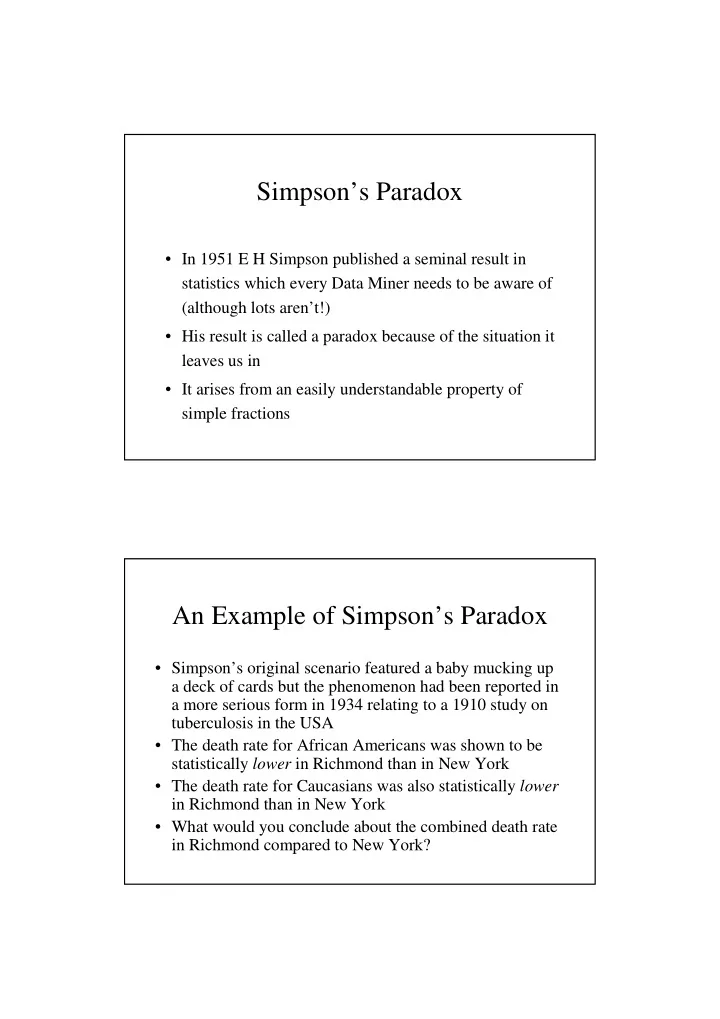

Simpson’s Paradox • In 1951 E H Simpson published a seminal result in statistics which every Data Miner needs to be aware of (although lots aren’t!) • His result is called a paradox because of the situation it leaves us in • It arises from an easily understandable property of simple fractions An Example of Simpson’s Paradox • Simpson’s original scenario featured a baby mucking up a deck of cards but the phenomenon had been reported in a more serious form in 1934 relating to a 1910 study on tuberculosis in the USA • The death rate for African Americans was shown to be statistically lower in Richmond than in New York • The death rate for Caucasians was also statistically lower in Richmond than in New York • What would you conclude about the combined death rate in Richmond compared to New York?
Example of Simpson’s Paradox II • You’ve probably guessed what the statistics said ... • The death rate for the total combined population of African Americans and Caucasians was higher in Richmond than in New York • What’s going on? a / b < A/B c / d < C/D ( a + c )/( b + d ) > (A + C)/(B + D) Example of Simpson’s Paradox III • Here’s a more contrived example which makes it easier for us to see what’s happening • A university has vacancies in the departments of History and Geography and wishes to discriminate in favour of women • In the History department – 5 men apply and 1 is hired – 8 women apply and 2 are hired – The success rate for men is 20% and for women it is 25% – The History department has favoured women over men • In the Geography department – 8 men apply and 6 are hired, – 5 women apply and 4 are hired – The success rate for men is 75% and for women it is 80% – The Geography department has favoured women over men
Example of Simpson’s Paradox IV • Across the University as a whole 13 men and 13 women applied • 7 men and 6 women were hired • The success rate for male applicants is greater than the success rate for female applicants - Men Women History 1/5 < 2/8 Geography 6/8 < 4/5 University 7/13 > 6/13 Example of Simpson’s Paradox V • Why does this happen? • There is a bias in the sampling but where does it come from? • There were 13 applicants of each sex - equal sample sizes for both groups • Geography and History had 13 applicants each - equal sample sizes again • The relatively small sample sizes aren’t responsible either - multiply all the numbers by anything you like and the situation remains the same The key to this “paradox” lies in the fact that women are disproportionately • applying for jobs that are harder to get • History hired 3 out of 13 applicants whereas Geography hired 10 out of 13 • There were clearly fewer vacancies in History than Geography • 8 of the 13 women applied to History but only 5 of the 13 men did • BEWARE !!
Recommend
More recommend